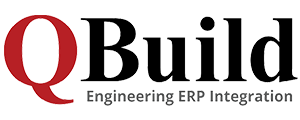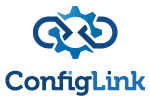The Role of Engineering Change in the Manufacturing Signal Chain
According to a survey conducted by Researchscape and commissioned by Rootstock Software in June 2024, 76% of leading manufacturers had a highly integrated signal chain. But what exactly is a signal chain, and why should manufacturers care about it?
The signal chain refers to the stream of critical data that flows across the manufacturing business. This data stream is essential for balancing supply and demand management, streamlining operations, and enhancing customer satisfaction. In essence, the signal chain is the backbone of efficient manufacturing processes, ensuring that every part of the production line is synchronized and operating optimally.
What role does Engineering Change play in the Manufacturing Signal Chain?
Design and Development
Engineering changes often originate during a product’s design and development phase. These changes result from design optimization, new technology integration, or correcting identified issues. They impact the signal chain by potentially altering the Bills of materials or Engineering drawings.
Production Process
When engineering changes are implemented, they affect the routing process. This might involve modifying machinery settings, updating production schedules, or retraining staff to accommodate new procedures. These changes can improve efficiency, reduce waste, or increase the reliability of the signal chain.
Supply Chain Management
Engineering changes impact the supply chain by necessitating the procurement of different components or materials. This leads the procurement team to review additional options for vendors and suppliers. The transparency of the required procurement streams is necessary for better communication regarding engineering changes.
Quality Control
Engineering changes often aim to enhance product quality, for example, through customer input. Direct and seamless communication between the engineering departments would ensure that customer requests are processed and reviewed promptly by the required engineering resources. This direct communication between the department and the engineering request would assist with product improvement, addressing customer concerns, and improving customer retention.
Compliance and Standards
Manufacturers must often adhere to industry standards and regulations. Engineering changes are driven by the need to comply with new or updated rules. This ensures that the products and the processes within the signal chain comply, avoiding legal and financial repercussions.
Documentation and Traceability
Implementing engineering changes requires meticulous documentation to ensure traceability. This is crucial for maintaining records of what changes were made, why, and how they were implemented. Accurate documentation supports the signal chain by providing a clear history of product evolution and any supporting documentation.
Customer Feedback and Market Demand
Engineering changes are driven by customer feedback or shifts in market demand. Adapting to these changes ensures that the product remains competitive and meets customer expectations. This responsiveness is critical for maintaining a solid signal chain aligned with market needs.
Cost Management
Engineering changes affect the cost structure of manufacturing. They can lead to cost savings through improved processes or increase costs due to more expensive materials or components. Understanding and managing these cost implications is essential for maintaining an efficient and cost-effective signal chain.
Why Does This Matter to You?
For manufacturers embracing the signal chain, a robust Engineering Change Process tightly integrated across the organization enhances customer satisfaction, improves communication, manages costs, and streamlines the design-to-delivery process. It’s not just about making changes; it’s about effectively managing and integrating them throughout your operations.
QBuild Software’s ECx Manager, part of the QSuite product line, empowers engineers by simplifying the Engineering Change process, eliminating duplicate data entry, and seamlessly integrating with your ERP system.






































